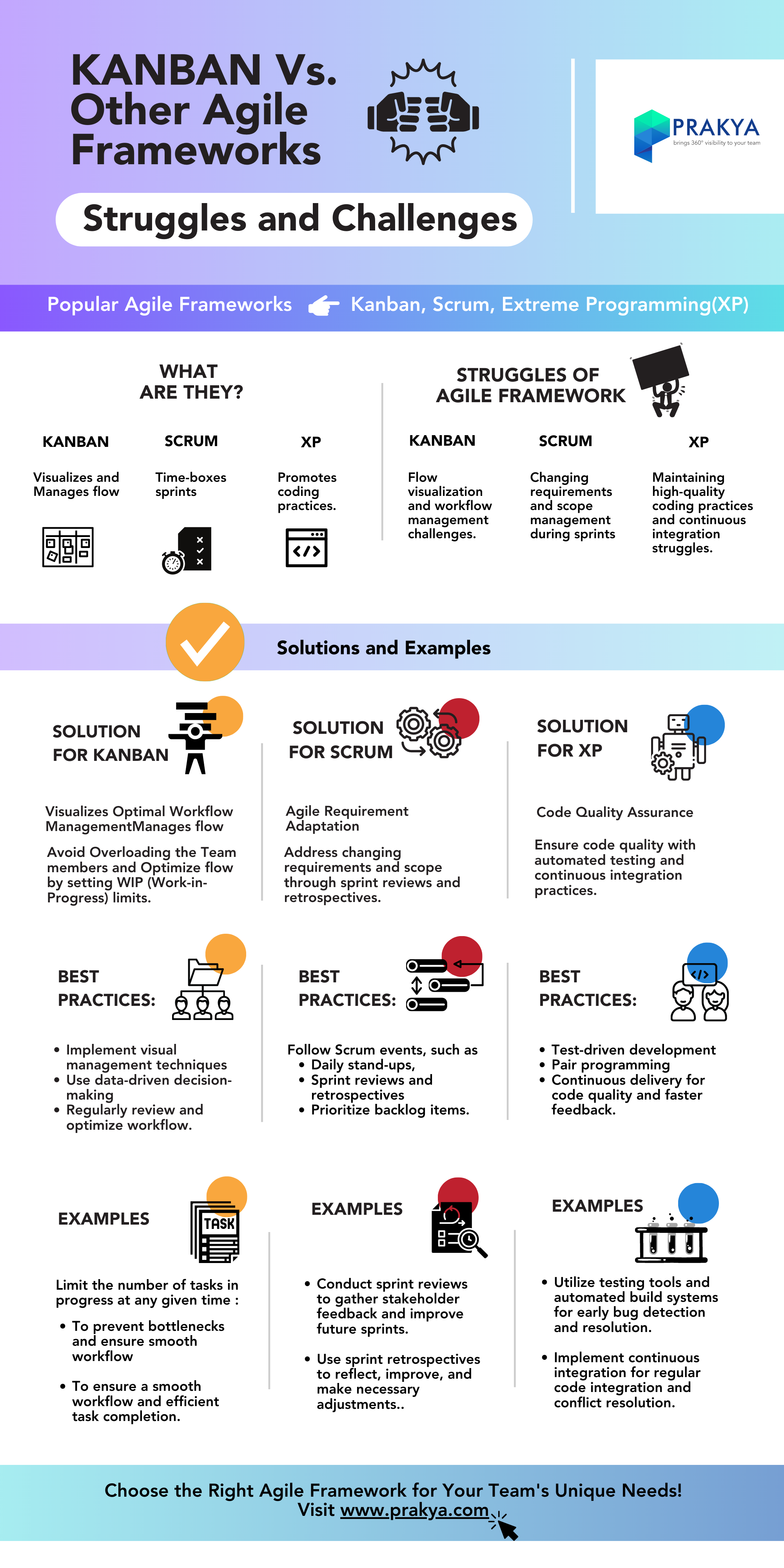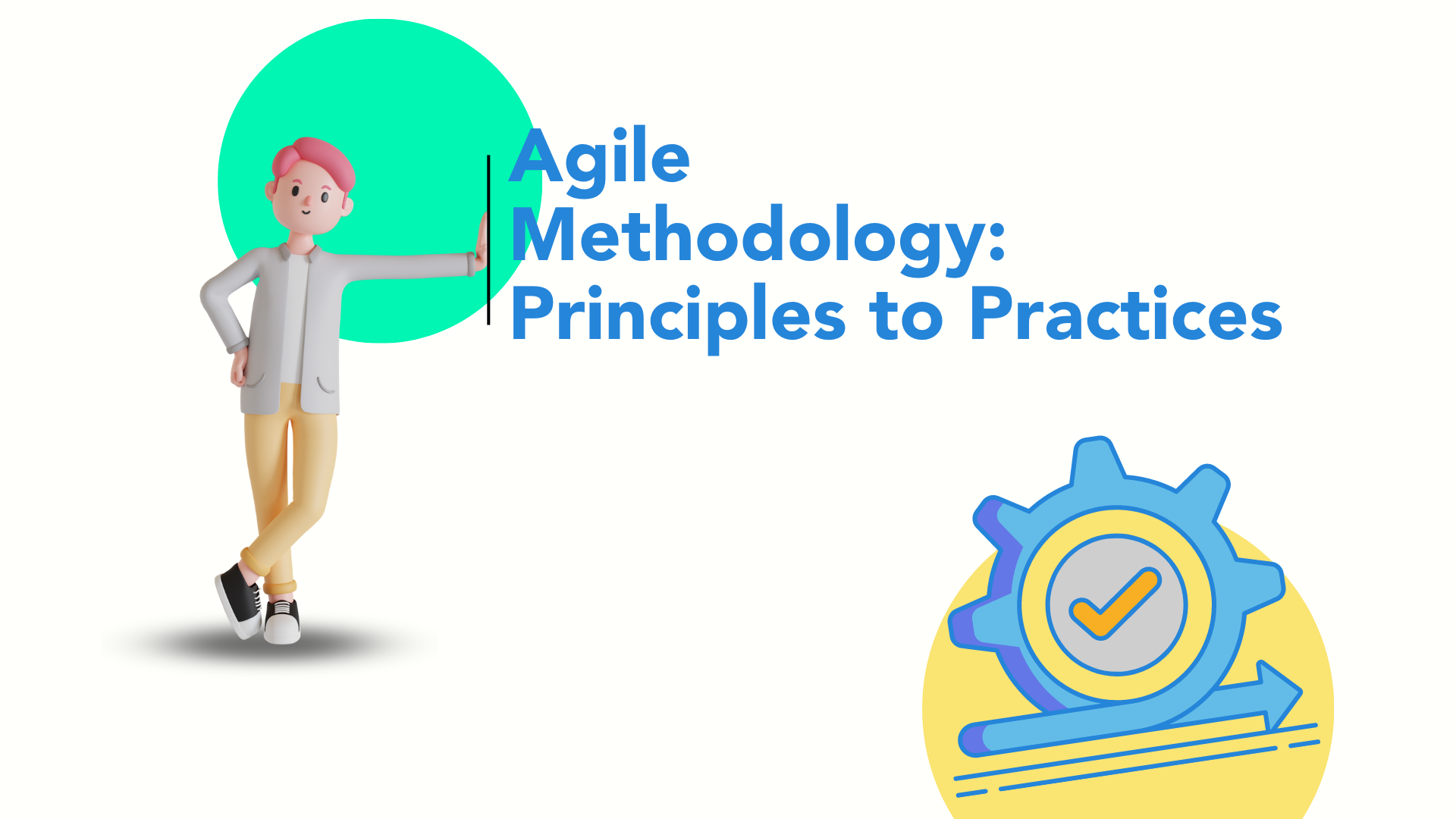Introduction
As businesses continue to adapt to an ever-changing landscape, the need for a flexible project management methodology becomes increasingly vital. Agile methodology is a solution that addresses this challenge. At its core, Agile is a set of principles and values that prioritize customer satisfaction, teamwork, and adaptability. In this article, we will explore the fundamentals of Agile methodology, including its values, principles, practices and frameworks We will also examine how Agile impacts time, cost, and scope, and how personal experiences from Agile practitioners can offer valuable insights and lessons learned.
Agile Methodology: Definition and Key Characteristics
In general, agility refers to the ability to move quickly and easily, and to be able to adapt to changing circumstances
The term “Agile” is not something new. It has been around for a long time and was first used in the context of software development in the 1990s.
Definition of Agile Methodology
- Agile methodology is a project management approach that emphasizes flexibility, collaboration, and continuous improvement. It is commonly used in software development but can be applied to any field or any project.
- It involves breaking a project into smaller iterations, typically lasting one to four weeks, called sprints. During each sprint, a cross-functional team of developers, stakeholders, and customers work together to develop and test a working version of the project.
- It emphasizes continuous communication, feedback, and adaptation to changing requirements. It encourages teamwork, transparency, and the delivery of working software or products in a timely manner.
- Some popular Agile methodologies include Scrum, Kanban, and Lean Agile.
Key Characteristics of Agile
- Agile methodology prioritizes collaboration and adaptability over rigid processes and documentation.
- Agile embraces an iterative approach, breaking down project deliverables into smaller, more manageable pieces, with each iteration building upon the last.
- Agile methodology allows for more flexibility and responsiveness to changes as they arise, rather than following a rigid plan.
- In contrast to Agile, the traditional Waterfall model follows a sequential approach where project phases are completed in sequence.
- The Waterfall model can be beneficial for projects with clearly defined requirements, but it can be inflexible and unresponsive to changes.
- Agile methodology’s flexibility and adaptability allows for a more efficient and effective project management approach, especially for projects with changing requirements or uncertain outcomes.
The Agile Manifesto
The Agile Manifesto is a set of values and principles for Agile software development. It provides a flexible project management methodology that differs significantly from the traditional Waterfall model.
What is the Agile Manifesto?
The Agile Manifesto outlines four core values that prioritize individuals and interactions, working software, customer collaboration, and responding to change. The manifesto values working software over comprehensive documentation and welcomes changes to requirements, even in late stages of development.
Who created the Agile Manifesto?
The Agile Manifesto was created by a group of software developers who met in 2001 to discuss new ways of software development. They came up with a set of principles for Agile software development, which they formalized into the Agile Manifesto.
How does the Agile Manifesto differ from the waterfall model?
The Agile Manifesto differs from the traditional Waterfall model in several key ways. While Waterfall follows a sequential approach with a clear-cut start and end, Agile allows for more flexibility and adaptability, with the ability to change requirements throughout the development process. Agile also places more emphasis on team collaboration, self-organizing teams, and technical excellence, compared to the Waterfall model’s focus on documentation and following a predetermined plan.
Overall, the Agile Manifesto provides a set of principles and values that prioritize working software, customer collaboration, and responding to change, with a flexible and adaptable approach to software development that differs significantly from the traditional Waterfall model.
Agile Values
Agile methodology is founded on four core values, as outlined in the Agile Manifesto:
- Individuals and interactions over processes and tools.
- Working software over comprehensive documentation.
- Customer collaboration over contract negotiation.
- Responding to change over following a plan.
These values reflect a shift away from traditional, bureaucratic approaches to software development and towards a more collaborative and flexible way of working. Let’s take a closer look at each value and its significance in Agile:
- Individuals and interactions over processes and tools: This value highlights the importance of people and relationships in software development. Agile teams prioritize face-to-face communication and collaboration over relying solely on processes and tools. By focusing on individuals and their interactions, teams are able to build trust, foster innovation, and deliver better results.
- Working software over comprehensive documentation: This value emphasizes the importance of delivering working software that meets customer needs. Agile teams prioritize creating functional software over producing extensive documentation. While documentation is still necessary, Agile teams seek to minimize it in favor of working software that can be tested and refined in collaboration with stakeholders.
- Customer collaboration over contract negotiation: This value puts the customer at the center of the software development process. Agile teams prioritize customer collaboration and feedback over negotiating contracts and requirements. By involving customers in the development process, teams are able to ensure that the software meets their needs and deliver value quickly.
- Responding to change over following a plan: This value recognizes the unpredictable nature of software development. Agile teams prioritize the ability to respond to change and adapt quickly over rigidly following a plan.
By embracing change, teams are able to continuously improve their processes, deliver software that meets customer needs, and stay ahead of the competition.
Twelve Agile Principles
Agile is founded on a set of 12 principles that guide Agile teams in delivering value to their customers. These principles are:
- Customer satisfaction through early and continuous software delivery – Delivering software early and continuously provides opportunities for feedback and helps ensure that the customer is satisfied with the product being built.
- Accommodate changing requirements throughout the development process – The Agile approach recognizes that changes to requirements are inevitable and that the development process should be flexible enough to accommodate them.
- Deliver working software frequently, with a preference to the shorter timescale – Frequent delivery of working software enables customers to see the product evolving and allows the development team to incorporate feedback more effectively.
- Collaboration between the business stakeholders and developers throughout the project – This principle helps ensure that the development team understands the requirements and that the product being built meets the needs of the customer.
- Build projects around motivated individuals and give them the support and environment they need – Agile values individuals and their interactions over processes and tools, recognizing that motivated individuals who are provided with the right environment and support will be more productive.
- Use face-to-face communication when possible – Face-to-face communication promotes collaboration, helps build relationships and trust, and helps ensure that everyone is on the same page.
- Working software is the primary measure of progress – Agile emphasizes working software over documentation, recognizing that delivering working software is the primary goal of software development.
- Sustainable development, able to maintain a constant pace – Sustainable development practices enable teams to maintain a consistent pace and avoid burnout, resulting in higher quality products and happier team members.
- Continuous attention to technical excellence and good design – Technical excellence and good design are critical for maintaining code quality, improving maintainability, and avoiding technical debt.
- Simplicity – Keeping things simple and focusing on the essentials helps ensure that the product being built meets the needs of the customer without unnecessary complexity.
- Self-organizing teams encourage great architectures, requirements, and designs – Self-organizing teams promote collaboration, creativity, and innovation, resulting in better architectures, requirements, and designs.
- Regularly reflect on team effectiveness and adjust behavior accordingly – Regular reflection on team effectiveness helps identify areas for improvement and allows the team to adjust their behavior to improve their performance over time.
By adhering to these principles, Agile teams can create high-quality products that meet the needs of their customers while adapting to changing requirements and market conditions.
Agile Practices and Frameworks
Agile is not just a methodology but a mindset that encourages continuous improvement, teamwork, and customer satisfaction. Various Agile practices and frameworks have been developed to implement the Agile principles and values in software development projects. In this section, we will provide an overview of some of the most popular Agile practices and frameworks.
Agile Practices:
- Pair Programming: Two developers work together on the same codebase simultaneously, improving the code quality and sharing knowledge.
- Test-Driven Development (TDD): Developers write automated tests before writing the actual code, making sure that the code meets the acceptance criteria.
- Continuous Integration (CI): Developers merge their code changes frequently, which automatically triggers build and testing to detect issues early on.
- Continuous Delivery (CD): The code changes are automatically built, tested, and deployed to a staging environment, where they are ready for release.
- Refactoring: The process of improving the code without changing its functionality, making it easier to maintain and extend.
Agile Frameworks:
Agile frameworks are pre-defined methodologies or sets of practices that are used to implement the Agile methodology in a consistent and efficient way. There are several Agile frameworks available, each with its own unique set of practices, roles, and principles. Here are some of the most popular Agile frameworks:
- Scrum: Scrum is a widely used Agile framework that is used for managing complex projects. It emphasizes the use of sprints, daily stand-up meetings, and product backlogs. Scrum also defines specific roles, such as Scrum Master, Product Owner, and Development Team.
- Kanban: Kanban is an Agile framework that is focused on visualizing work and limiting work in progress. It involves the use of a Kanban board, which is used to visualize the status of work items and track progress.
- Lean Agile: Lean Agile is an Agile framework that is based on the Lean manufacturing principles. It emphasizes the delivery of value to the customer, continuous improvement, and the elimination of waste.
- Extreme Programming (XP): XP is an Agile framework that is focused on software development. It emphasizes practices such as pair programming, continuous integration, and test-driven development.
- Crystal: Crystal is an Agile framework that is designed for small to medium-sized teams. It emphasizes the importance of communication, simplicity, and frequent delivery of working software.
- Agile Unified Process (AUP): AUP is an Agile framework that is based on the Unified Process (UP). It emphasizes the use of iterative development, risk management, and continuous improvement.
Each Agile framework has its own set of practices, principles, and roles, and the choice of framework will depend on the specific needs and requirements of the project.
Check out our infographic on Kanban Vs. Other Frameworks, their struggles and challenges

Each Agile practice and framework has its unique strengths and weaknesses. Therefore, it is essential to choose the right practice or framework based on the project’s requirements, team’s skills, and customer’s expectations. Agile provides flexibility and adaptability, allowing teams to tailor their approach continuously and optimize their delivery process.





